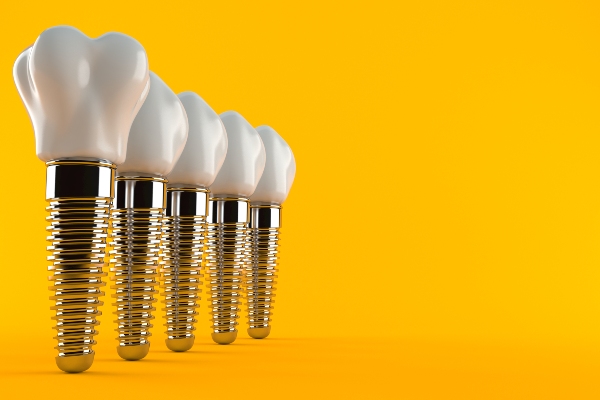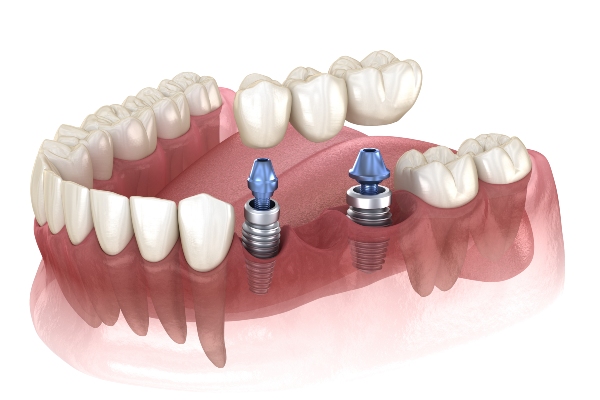A Dental Crown After Root Canal Therapy

A dental crown is usually chosen as the restoration for a tooth after it has undergone a root canal procedure. Root canal therapy involves removing the soft tissues in a tooth’s pulp chamber to prevent or treat infections.
Root canals enable dentists to save extremely damaged or infected teeth. The procedure has a high success rate, so it typically only needs to be performed once to treat an infected tooth. Teeth that have been mended with root canals are typically covered up with crowns to prevent further damage to them.
Getting a dental crown after getting root canal therapy
Placing a dental crown on a tooth after a root canal increases the odds of the procedure being successful. Reasons that dentists often recommend placing dental crowns on teeth that have been repaired with root canals include:
- To hold what is left of the tooth together and prevent it from breaking apart
- To restore the aesthetics of the tooth
- To shield the tooth against bite forces, restoring its function
- To prevent bacteria and saliva from making contact with the contents of the pulp chamber
The root canal procedure
Root canal therapy starts with the dentist closely examining the patient's damaged or decayed tooth. In some cases, a root canal might not be the best solution. For example, if the infection is close to spreading to the jawbone, the dentist might recommend an extraction to prevent this. A tooth infection is not a significant health issue, but it can become one if the infection reaches other parts of the body, like the brain.
Before the procedure, the dentist injects the patient with a local anesthetic to numb the area that will be worked on. The anesthetic prevents the patient from feeling anything while the dentist works on their tooth.
A dental drill is used to make a hole into the tooth’s pulp chamber. Files are then used to extract the pulp chamber's contents and clean the area. Medication is inserted into the tooth to kill any bacteria left there, and it is sealed with a material called gutta-percha.
The tooth is then prepped for a crown by shaving off some of the enamel, or it is rebuilt with dental filling, depending on how much of the tooth is left. An impression is taken and sent to a dental lab that makes restorations like crowns. The customized crown should be ready in a couple of weeks. The patient’s tooth is covered with a temporary crown in the meantime.
The patient returns to the clinic in about two weeks for their custom crown. The temporary crown is removed and replaced with the customized crown. The restoration can protect the treated tooth for up to 20 years with proper care.
Frequently asked questions about dental crowns
Here are the answers to questions that patients might have regarding dental crowns.
1. How long does it take to place a dental crown on a tooth?
Placing a dental crown on a tooth usually takes two visits to the dentist. The tooth is prepared during the first visit, and an impression is made. This impression is then sent to a lab, where the crown will be made. The second visit is when the actual crown is placed on the tooth. It typically takes the lab about two weeks to return the finished restoration to the dentist.
2. How long does a crown last?
A dental cap can last for up to 15 years with proper care. Simple things that patients can do to get the most out of their dental crown include practicing good oral hygiene, taking biannual trips to the dentist, and avoiding hard foods that can damage the restoration. The materials used to make the crown also affect its longevity. For example, gold crowns tend to be the most durable, while porcelain crowns are more fragile.
3. Does getting a dental crown hurt?
Patients may feel a bit of discomfort during the treatment, but this can usually be alleviated with local anesthetics that have a numbing effect. After the process, the teeth may be sensitive for a few days as the patient adjusts to their new dental crown. Any discomfort caused by the increased sensitivity can be addressed with over-the-counter desensitizing products.
Do you need a dental crown?
Do not wait until your damaged tooth leads to something worse. Call or visit our Summit clinic to get started with treatment.
Check out what others are saying about our dental services on Yelp: Dental Crowns and Dental Bridges in Summit, NJ.
Related Posts
Dental crowns are a great way to repair teeth that are damaged by decay or dental trauma, and they are commonly used for a variety of other purposes as well. While many are familiar with what dental crowns are, it can be helpful to understand exactly how they are bonded to a tooth, particularly if…
A dental bridge is one of the tooth replacement options a dentist might recommend to restore missing teeth and a patient's smile. Regardless of the cause of tooth loss—injury, tooth decay, or an oral health condition—tooth loss can make eating inconvenient and even affect a patient's confidence. Once in place, a dental bridge will improve…
Dental implants are the most stable dental restorations you can get. The invasive procedure will cut through your gum tissue. The dentist will drill into the jawbone and place titanium rods into the holes. The right kind of care is important to make sure that the implant site is free from infections. Here are the…
Dental implants are effective, long-lasting artificial teeth. Implants are surgically attached to the jawbone to look and function like natural teeth. As a result, patients can chew, talk, and laugh without worrying about dentures slipping. They also improve oral health. This article explores when and why to get implants and the qualifying factors for treatment.Patients…


